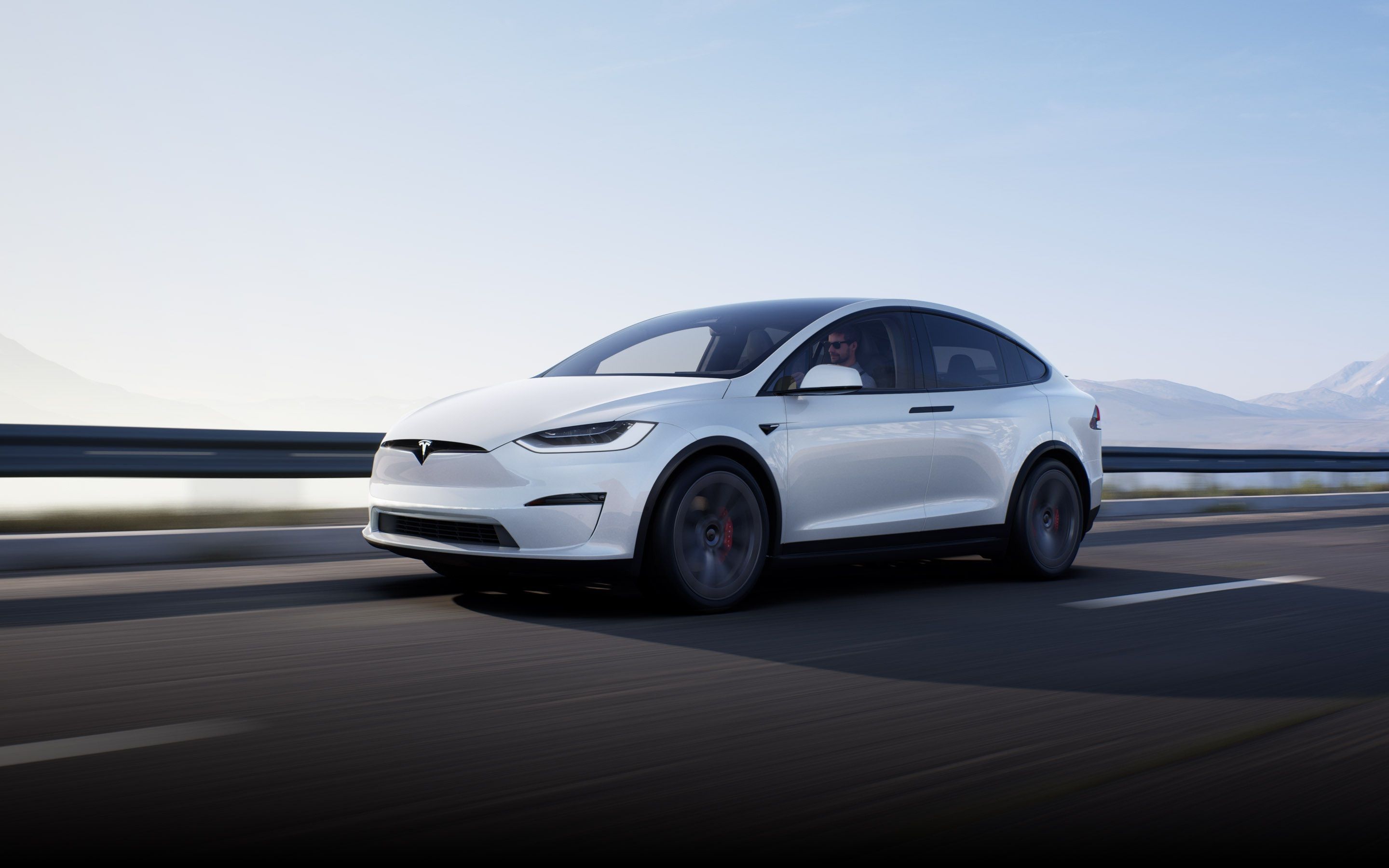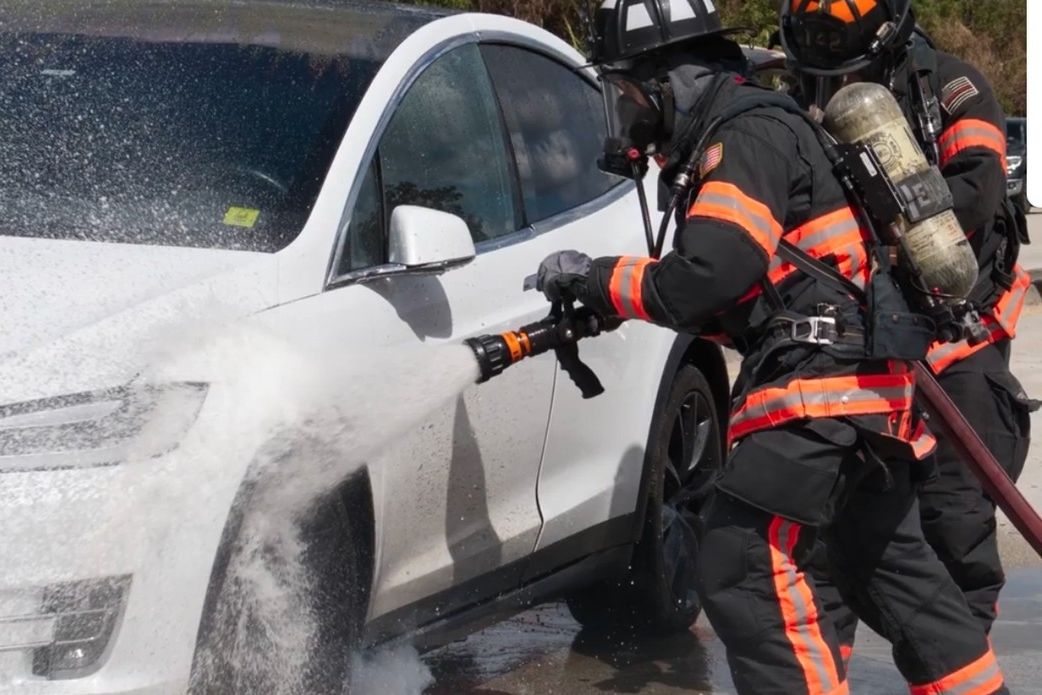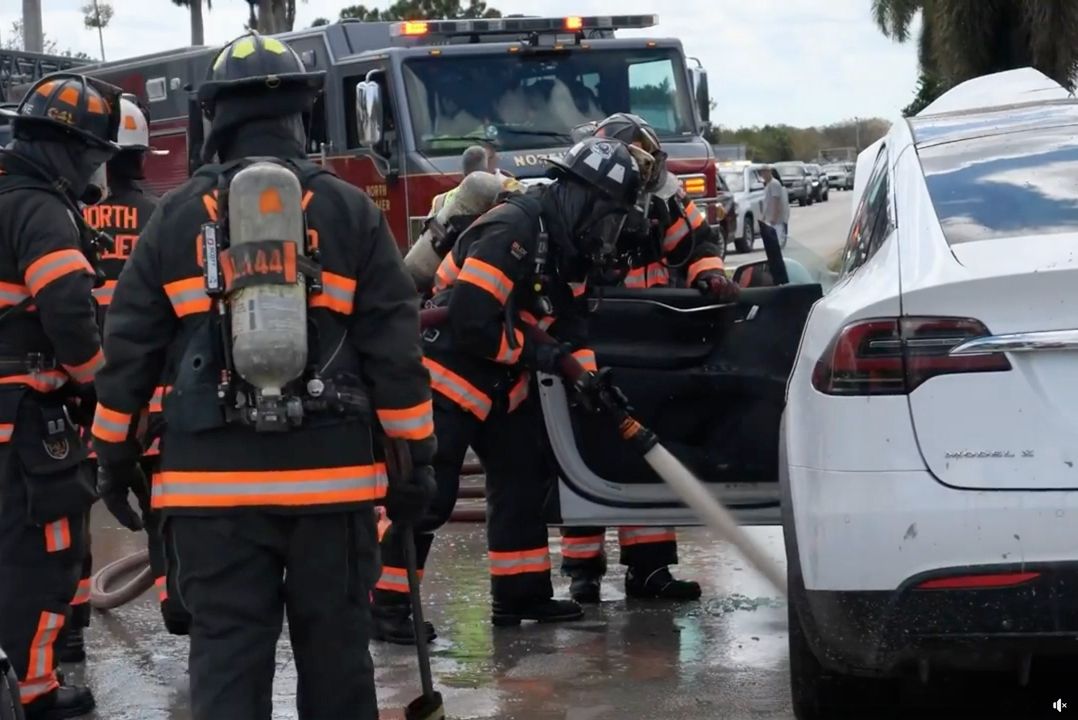
The worsening global environmental crisis is not only doing untold damage to our economy and infrastructure, but it's starting to uncover certain weaknesses in our plans to combat it. Hurricane Ian, which recently spread chaos and destruction along the Florida coast - leaving numerous dead and causing massive property damage - has revealed serious weakness in electric vehicles; they burst into flames when flooded. According to the North Collier Fire Rescue District in Florida, electric cars are bursting into flames due to water damage sustained to their battery packs, and it's taking a massive toll on fire rescue departments across the state. The video below, showing firefighters attempting to save a Tesla Model X, highlights how difficult dousing these blazes can be.
It is a scientific fact that lithium and water don't mix well, and the recent events in Florida proved to be the perfect science experiment gone wrong, particularly with the added factor of salinization. Firefighters in Florida have asked EV owners whose cars have sustained water damage during the recent hurricane to have them towed away from major structures, but many remain dangerously submerged.
EV battery fires are a well-documented issue. We've seen these fires being caused by manufacturing issues, as was the case with a certain little locally-produced EV, and we've seen how difficult these fires can be to put out. While many manufacturers have made EV fires a priority, we still see numerous incidents every month, and the state of Florida has just experienced what can be described as a worst-case scenario.
Last year, the National Transportation Safety Board requested that automakers issue detailed guidelines for preventing and containing fires caused by battery packs after the NTSB had conducted four investigations into fires involving Tesla vehicles. According to the International Association of Fire and Rescue Services, there has been a significant increase in lithium battery fires over the past six years, ranging from cell phones and e-watches to electric scooters and vehicles. With such a wide spread of affected industries, the hope is that some sort of silver bullet cure will be found to make all sorts of batteries safer and less prone to spontaneous combustion.
The irony isn't lost on anyone; the vehicles that are supposed to propel us into a green future are not only taking mountains of natural resources to produce but, when they catch fire, take a disproportionate amount of time and resources to extinguish. Luckily there are already companies developing new ways to kill EV fires by using advanced thermoplastic technology, but with the widespread damage caused by Hurricane Ian stretching emergency services too thin, we could be looking at a series of ticking timebombs just waiting to go off, and our brand new electric fire engines won't be of much help either.


